Asteroid 15779 Scottroberts,
iPhone Messier Galaxies
Posted: 11 April 2020
|
Open: Friday, 10 April 2020, 1817 MST Temperature: 79°F |
Session: 1454 Conditions: Clear, breezy |
Equipment:
12" f/8 LX600 w/StarLock
2" 24mm UWA eyepiece
2" 30mm eyepiece
1.25" 15mm eyepiece
Focal Reducer
Camera:
D850 DSLR
iPhone 11 Pro Max
1824 MST: LX600 ON, StarLock OFF, High Precision OFF.
Viewed Venus, 102X.
1831 MST: viewed the star Sirius, 102X.
1851 MST: sunset (time approximate due to clouds low along the western horizon).
1858 MST: dome OFF (onto the PZT).
1900 MST: calm now. Prepared D850 DSLR for imaging.
1945 MST: mounted the D850 DSLR at prime focus + focal reducer. Then began waiting for the end of Astronomical Twilight (2015 MST).
2000 MST: focused on the star Alphard using a Bahtinov Mask, then locked the 12" primary mirror.
2005 MST: Wi-Fi ON.
Used SkySafari 6 Pro on the iPhone to GOTO Asteroid 15779 Scottroberts, Mag. +18.5. This asteroid is named for Scott Roberts, someone I've known since about 1999. He is now the President of Explore Scientific. Here is a photo of Scott and me taken at the First Annual David H. Levy Arizona Dark Sky Star Party in October 2019.
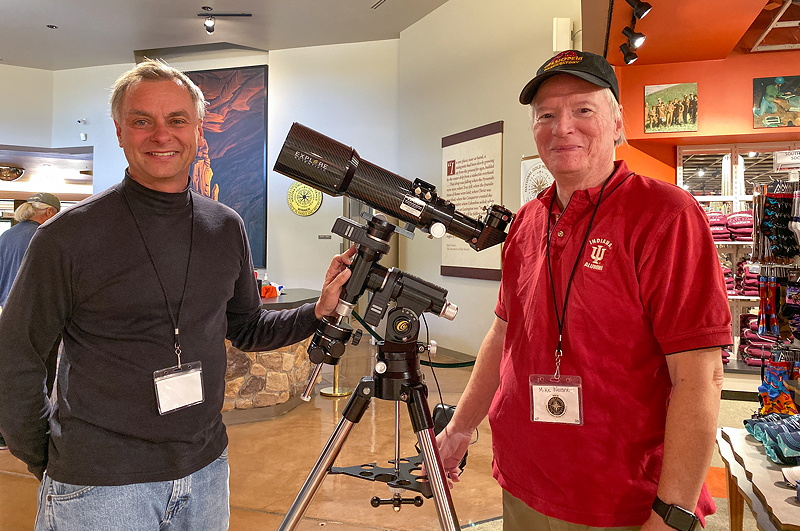
2010 MST: Wi-Fi OFF, StarLock ON.
Although seeing was not very good, I did manage to capture the movement of Asteroid Scottroberts in images at 2015 MST and 2121 MST. I had to do a lot of post-processing of the images to bring out the faint Mag. +18.5 asteroid.


As I've mentioned before, I came to love asteroids when I was working on the Indiana University Asteroid Program as an undergraduate Astrophysics student 1966-70. I now love to image asteroids that have been named for people that I know. You can see more of these asteroids on my Asteroids & Dwarf Planets Astrophotography Album.
2130 MST: took a SQM reading.
2134 MST: dome ON.
Viewed M53 (globular cluster), 102X and 163X.
Mounted the iPhone 11 Pro Max on the 15mm eyepiece using the Levenhuk adapter. Took this StarLock autoguided afocal 163X image of M53 using the iOS app NightCap Camera (ISO 12500, 1sec, 1 minute, 1X lens).

I then did several StarLock autoguided afocal 81X (30mm eyepiece) images of Messier galaxies for my iPhone Messier Catalog Astrophotography Album using NightCap Camera (ISO 12500, 1sec, 1 minute, 1X lens).
M49
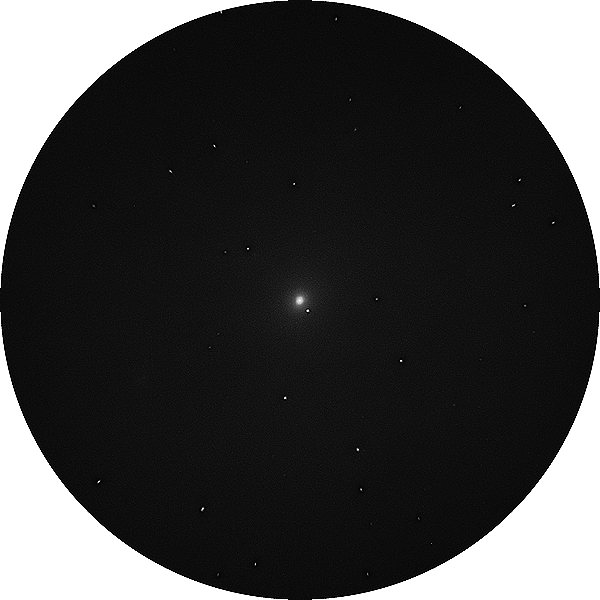
M58
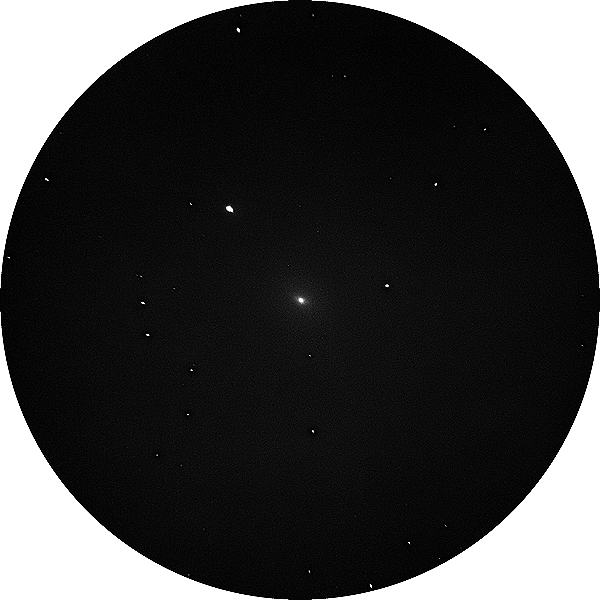
M59
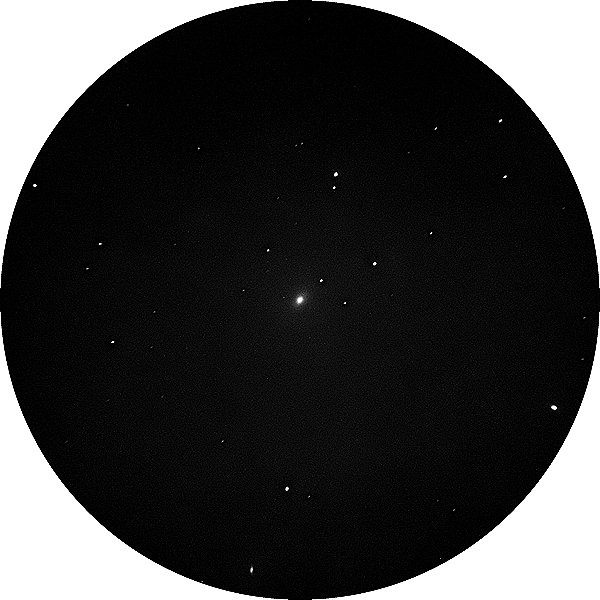
M60

M61
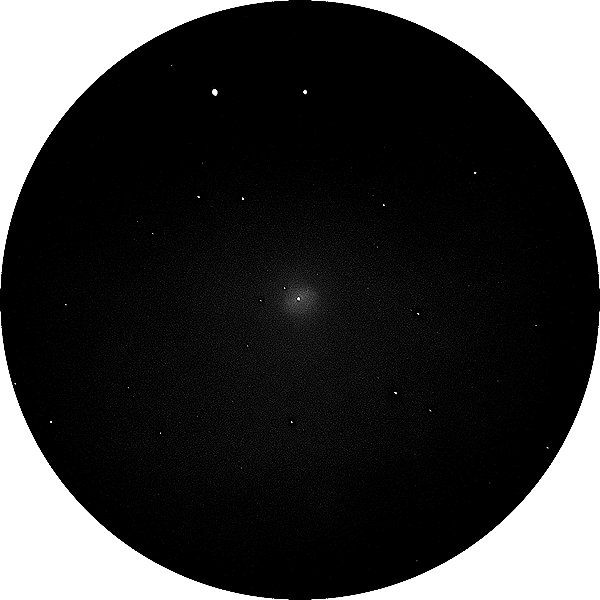
2218 MST: StarLock OFF.
The eastern sky was now brightening from the rising waning gibbous Moon.
Viewed M61 (galaxy), 163X and 102X.
2224 MST: LX600 OFF.
|
Close: Friday, 10 April 2020, 2233 MST Temperature: 51°F |
Session Length: 4h 16m Conditions: Clear, breezy, SQM 21.25 |
I recently finished reading David Levy's autobiography A Nightwatchman's Journey: The Road Not Taken that I received at the First Annual David H. Levy Arizona Dark Sky Star Party. Here's a photo of David and me at the star party.
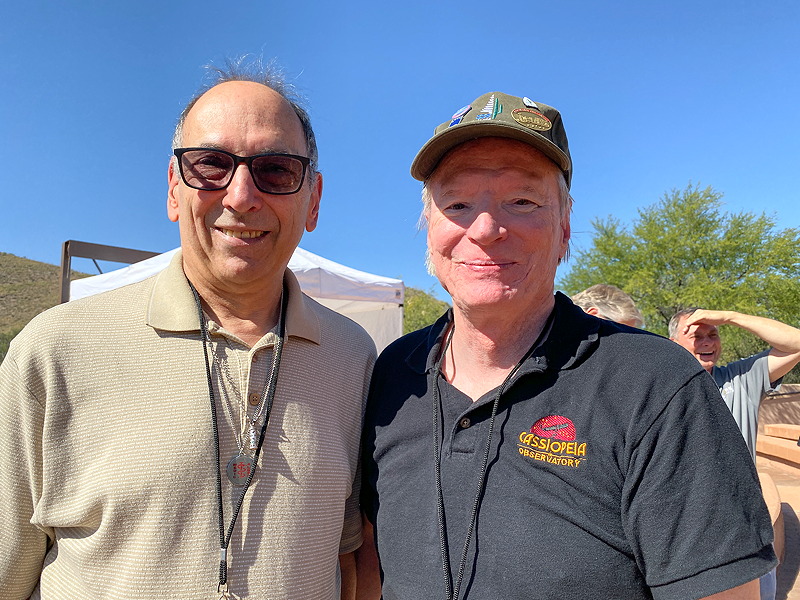
In his autobiography David mentions the novel "Cole of Spyglass Mountain" by Arthur Preston Hankins, published in 1923. The novel follows the story an amateur astronomy from his early life to making a monumental discovery many years later. The novel takes place in the early 1900s so there are a lot of historical themes from that time. Worth a read. The link for the novel is for a free electronic copy.
Comments are welcome using Email. Twitter users can use the button below to tweet this report to their followers. Thanks.
Cassiopeia Observatory Home Page
Copyright ©2020 Michael L. Weasner / mweasner@me.com
URL = http://www.weasner.com/co/Reports/2020/04/11/index.html
